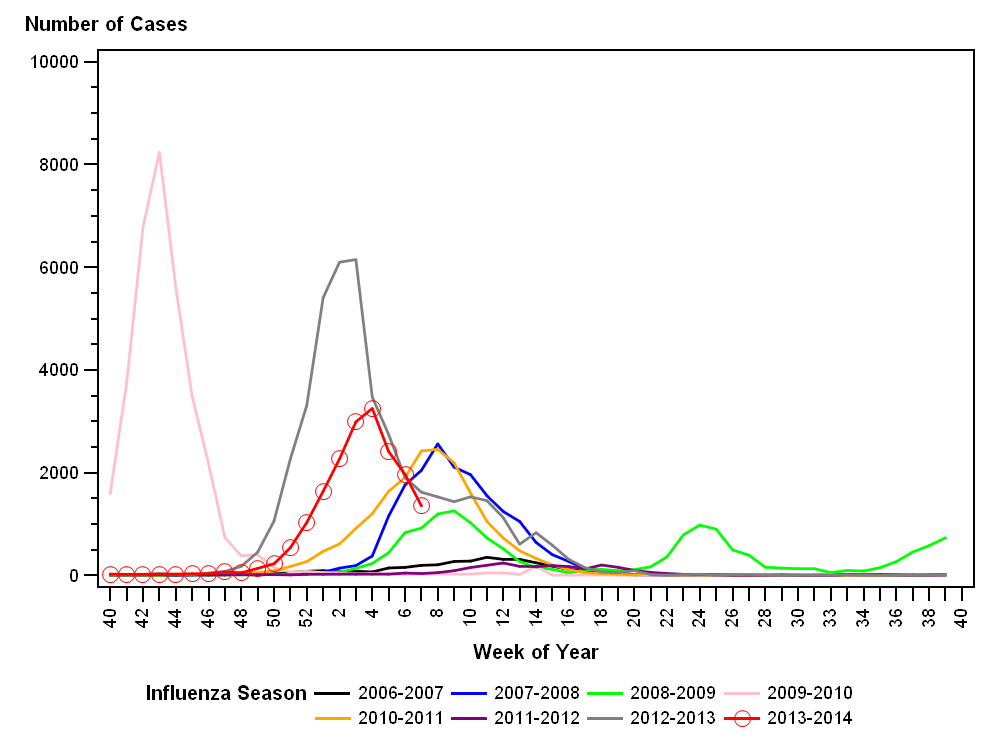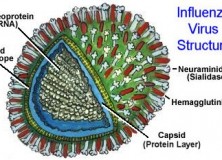Six weeks into the flu season, the H1N1 virus is still killing young adults and middle-aged Americans at epidemic levels in other areas of the U.S., according to the Centers for Disease Control and Prevention.
Pennsylvania, though, seems to have gotten through the worst of the viral storm, if not the snow storms.
Although the death toll isn’t nearly as bad as the 2009 influenza epidemic that swept across the United States, that same H1N1 virus has seen a resurgence this year, infecting more than 6,600 Americans since October and resulting in deaths beyond epidemic levels for the rest of the country since mid-January.
Table 5 : Influenza-related Deaths Reported in Pennsylvania by Age Group (n=58) as of February 15, 2014
|
Age Group |
# of Deaths |
|
0-4 |
0 |
|
5-9 |
1 |
|
10-18 |
0 |
|
19-24 |
3 |
|
25-49 |
13 |
|
50-64 |
22 |
|
>65 |
19 |
|
Total |
58 |
The CDC’s weekly flu report found that during the week ending February 8, influenza was responsible for 8.4 percent of all deaths in the 122 cities that report such statistics.
In Pennsylvania a sharp spike in late December that continued through January had caught the attention of the medical community, but just as suddenly, February saw cases and associated deaths drop off just as quickly.
In order to be considered an epidemic, influenza- and pneumonia-related fatalities must top 7.3 percent of all fatalities. Considering that not every city reports on this data, the death rate could be even higher than it already is. Notably, this flu season has diverged from typical trends. While those over 65 years of age are still the most likely to be hospitalized, the H1N1 virus has the ability to disproportionally affect young and middle aged adults when compared to other strains. The CDC’s numbers pin 60 percent of all hospitalizations among those between 18 and 64 years of age.
“These severe flu outcomes are a reminder that flu can be a very serious disease for anyone, including young, previously health adults,” CDC spokesman Jason McDonald said to the Washington Post.

Some states in particular, like North Carolina, are looking at a potential record number of deaths. Already, the state has reported 64 fatalities due to the illness — a considerable jump from last year, which saw 59 deaths total.
Although numerous states have reported widespread influenza cases, California has been hit with especially severe consequences. According to the San Jose Mercury News, 243 deaths this season have been pinned on the flu. Another 41 were reported last week, though they have yet to be confirmed.
A New Strain of Avian Flu
Perhaps just as concerning as the high death tolls in the United States is the discovery of even more infectious strains of the flu in Asia. As noted by the Post, the World Health Organization is keeping an eye on more than 300 cases involving a new strain of avian flu called H7N9, primarily found in China, which has killed about 25 percent of the people it’s infected.






